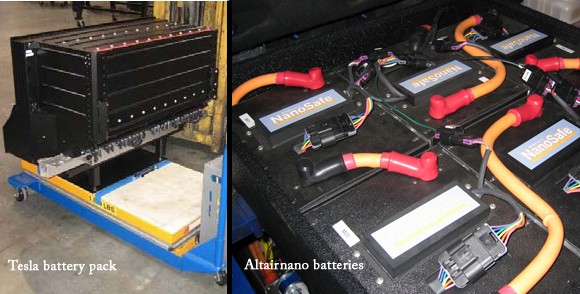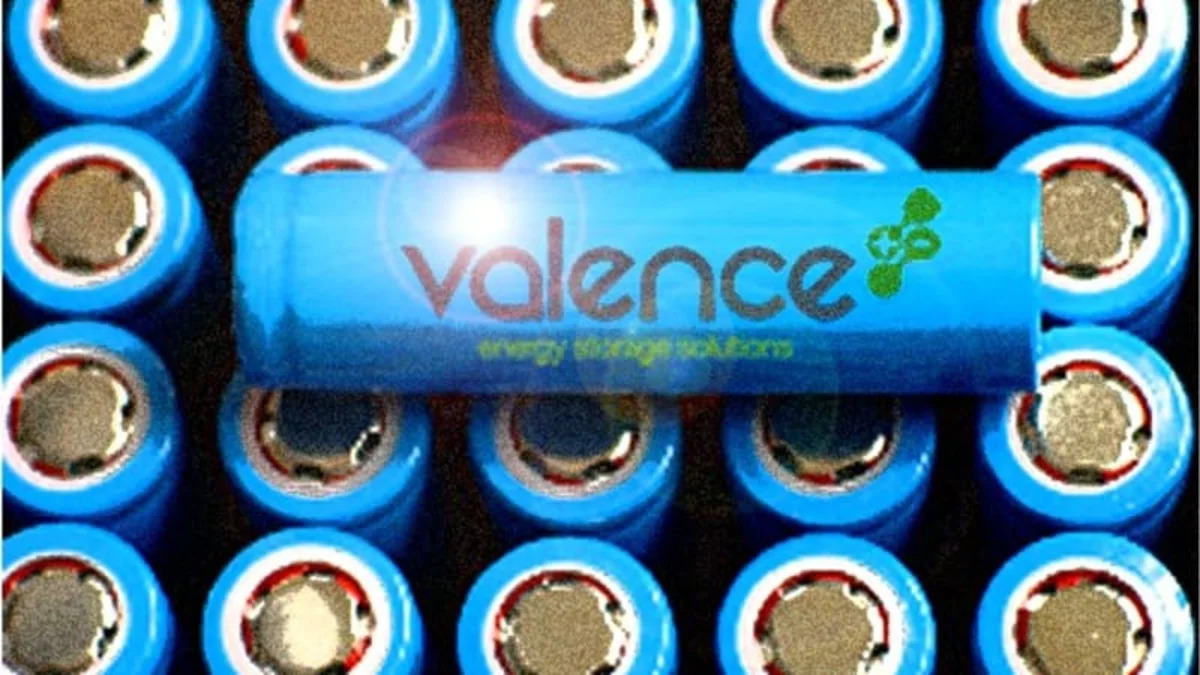 While lead acid batteries have energized electric cars for most of the motoring age and nickel metal hydrides (NiMH) have helped hybrids return high gas mileage numbers more recently, the future seems to securely belong to lithium batteries for both applications. With all that's riding on this technology, can it really fulfill its green promises? Of the dozens of electric vehicle announcements have been made over the past few years, practically all of them have named lithium ion batteries as their energy storage solution of choice. Indeed, lithium ion batteries power the best-known electric car on the road today, the Tesla Roadster. But, with reports of lithium-powered laptop fires and the press ponderings on the possibility of "peak-lithium," it hasn't all been smooth sailing. Is there hope beyond the hype or is there, perhaps, a different energy storage around the corner? Hit the jump and we'll investigate the possibilities.
While lead acid batteries have energized electric cars for most of the motoring age and nickel metal hydrides (NiMH) have helped hybrids return high gas mileage numbers more recently, the future seems to securely belong to lithium batteries for both applications. With all that's riding on this technology, can it really fulfill its green promises? Of the dozens of electric vehicle announcements have been made over the past few years, practically all of them have named lithium ion batteries as their energy storage solution of choice. Indeed, lithium ion batteries power the best-known electric car on the road today, the Tesla Roadster. But, with reports of lithium-powered laptop fires and the press ponderings on the possibility of "peak-lithium," it hasn't all been smooth sailing. Is there hope beyond the hype or is there, perhaps, a different energy storage around the corner? Hit the jump and we'll investigate the possibilities.
To begin, you should know that not all lithium-containing batteries are alike. Although they consist of mainly three different components; an anode (where the electric charge flows in), a cathode (where the charge flows out) and an electrolyte (what the charge flows through), the materials that these parts consist of gives a battery its particular characteristics. It would be wonderful if one formulation had all the qualities needed, but so far the perfect combination hasn't been created. There always seems to be some trade offs between energy density (the amount of energy that can be stored), power density (the ability to discharge and charge energy quickly), longevity (both age and the number of cycles that it can be charged and discharged), effective temperature range and, probably most importantly, price. On one end of the spectrum, Altairnano Technologies uses a nano-structured lithium titanate spinel oxide (Li4Ti5O12) anode that can charge and discharge rapidly, has great longevity, good temperature range but is not very energy dense and on the expensive side. Meanwhile the more standard laptop-type battery used by Tesla is cheaper and holds a lot more energy but can not be charged as quickly, has much less longevity and needs a sophisticated management system to control the temperature and monitor all the individual cells.

The A123 Systems batteries for Chrysler's electric vehicles, with their lithium iron phosphate (LiFePO4) anodes, are somewhere in the middle, with a decent longevity, decent power density, so-so energy density and moderate (comparatively) price. Kokam, who have been tapped to supply Smith Electric Vehicles US, throws a bit of a curve into this mix by using a lithium polymer battery that uses a solid electrolyte unlike the organic composition of the others. Check out the video below to see how lithium polymer batteries are made.
The video meant to be presented here is no longer available. Sorry for the inconvenience.
While we can't say that lithium batteries will be the final best solution for electric vehicles, it is clear that they are good enough now to begin using for some applications. The technology is still quite young and continues to improve steadily and more research is being done as it becomes increasingly clear that our current carbon fuel paradigm has to begin changing. In fact, some research efforts could produce lithium-based energy storage that could power a car for over a thousand miles before needing to plug in again.
Other questions about lithium that seem to rise from time to time include safety, supply and recycling. While some battery chemistries are susceptible to overheating, auto manufacturers are keenly aware of this and have been engineering their packs to make this a highly unlikely event, even in the case of a vehicle crash. As for other harmful effects, we're pretty sure EMF concerns are nothing to worry about and even if you accidentally drink a glass of battery electrolyte, it will only taste bad but might not harm you (not that we recommend it). As for recycling, it can and is being done now and we're pretty sure it will continue in the future, since doing so is likely less expensive than mining new materials and will help ensure that supplies remain plentiful.


Sign in to post
Please sign in to leave a comment.
Continue